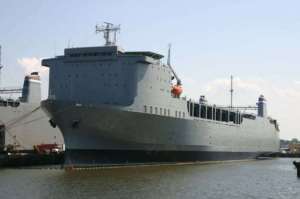 OPCW Headquarters in The Hague, Netherlands
OPCW Headquarters in The Hague, Netherlands
By Daryl G. Kimball
(The Hague, Netherlands) -- This week diplomats from the member states of the 1997 Chemical Weapons Convention met for four days at the headquarters of the Organisation for the Prohibition of Chemical Weapons for their 18th Conference of States Parties. The meeting itself went smoothly and Ahmet Üzümcü was re-appointed by acclamation for a second term as OPCW Director-General.
But this was no ordinary meeting of the OPCW states parties. It was the first since the horrific sarin gas attacks killed over 1,000 civilians on the outskirts of Damascus on August 21 and development of the Sept. 14 Lavrov-Kerry agreement that put into motion an expeditious plan for accounting, inspection, control, and elimination of Syria's deadly arsenal under the auspices of the OPCW.
The plan calls for the entire stockpile, including chemical agents, production facilities, and delivery systems, is to be safely eliminated or, if necessary, removed from the country by mid-2014.
To its great credit, the OPCW has stepped up to the task and adjusted its operations to meet the tight deadlines for verifying the Syrian chemical weapons declaration and the elimination of its relatively small stockpile of weaponized material and larger stockpile of precursor chemicals.
So far, the process has gone forward on schedule and without major incident, in part due to the cooperation of the Syrian government, which made the decision shortly after the international outcry over the August 21 attacks--and under the credible threat of military force against its chemical arsenal--that its chemical weapons arsenal was a far greater liability than an asset.
With the verified disablement of Syria's declared mixing and filling equipment and production facilities that was completed by Oct. 31, the risk of further CW use against Syria's people has been severely reduced if not eliminated as the means for the rapid weaponization of Syria's chemical precursors and agents have been verifiably destroyed.
But serious security, technical, and financial challenges that lie ahead, including the removal of the highest priority bulk agents and precursors from Syria and under war-time conditions to the port of Latakia by December 31.
As Dan Horner reports in the December issue of Arms Control Today, Director-General Üzümcü is to present the OPCW Executive Council with a plan "for its consideration" by Dec. 17 for chemical weapons destruction outside Syria, including "provisions for ensuring clear responsibility at each stage for all chemicals."
As announced last Friday, Nov. 29, once those materials are removed from Syria, the United States has offered to contribute a destruction technology, full operational support and financing to neutralize Syria's priority chemicals on a U.S. naval vessel--the MV Cape Ray--using the Field Deployable Hydrolysis System under the supervision of independent OPCW inspectors.
On Nov. 22, the OPCW also issued request for expressions of interest from private firms to assist in the disposal of about 800 metric tons of Syrian chemicals other than the mustard agent and binary chemical weapons components.
As reported in ACT, the request to companies also covers disposal of effluent from the mustard agent and binary chemical weapons components, totaling about 7.7 million liters, according to the OPCW request document. In a Nov. 30 press release, the OPCW said 35 companies had responded to the request. That number is now apparently up to 38.
In the closed-door meetings and in side meetings, the main topic of conversation between OPCW delegations and the nongovernmental representatives from the Chemical Weapons Convention Coalition attending the meeting was this innovative plan for the next phase of the Syrian CW elimination mission.
The evolving plans calls for a Danish cargo ship to take on board the Syrian chemicals at the port of Latakia and then transfer the chemical cargo at a port in a third country, likely in the Mediterranean, onto the MV Cape Ray, which is a 650-foot long, 35,000 ton, "roll-on-roll-off" cargo vessel.
For several weeks, U.S. Defense Department agencies have been hard at work outfitting the MV Cape Ray in Norfolk, VA with special equipment that will be used to neutralize some of Syria's remaining bulk agents, including a quantity of mustard agent, and other precursor chemicals.
Two hydrolysis units and a bevy of "iso-containers" as well as a customized on-board "plumbing system" for the operation are being installed on the MV Cape Ray. The hydrolysis units would be employed to neutralize the chemical agents within about 45 days of taking it on board, according to officials I spoke with in The Hague.
 The MV Cape Ray at Portsmouth, Virginia.
The MV Cape Ray at Portsmouth, Virginia.
The MV Cape Ray is scheduled to undergo a "shake-down" sea trial in late-December for likely deployment by January.
Hydrolysis is a well-proven technology that involves breaking down a lethal chemical agent such as mustard gas with hot water and other compounds. The result is chemically-altered effluent that can be disposed of as industrial toxic waste.
The ship-based option can be done relatively quickly and at less expense than on land. And, more importantly, the operation can be conducted safely and securely and in an environmentally responsible manner.
However, before the operation in undertaken, a much more thorough public information effort--led by the United States--should into play to describe the operation in order to address questions about public health, environmental protection, and security that will be asked and can be answered.
The next phase in the Syria mission, like the earlier phases, is difficult but doable and is important for international peace and security.
